Affiliate links on Android Authority may earn us a commission. Learn more.
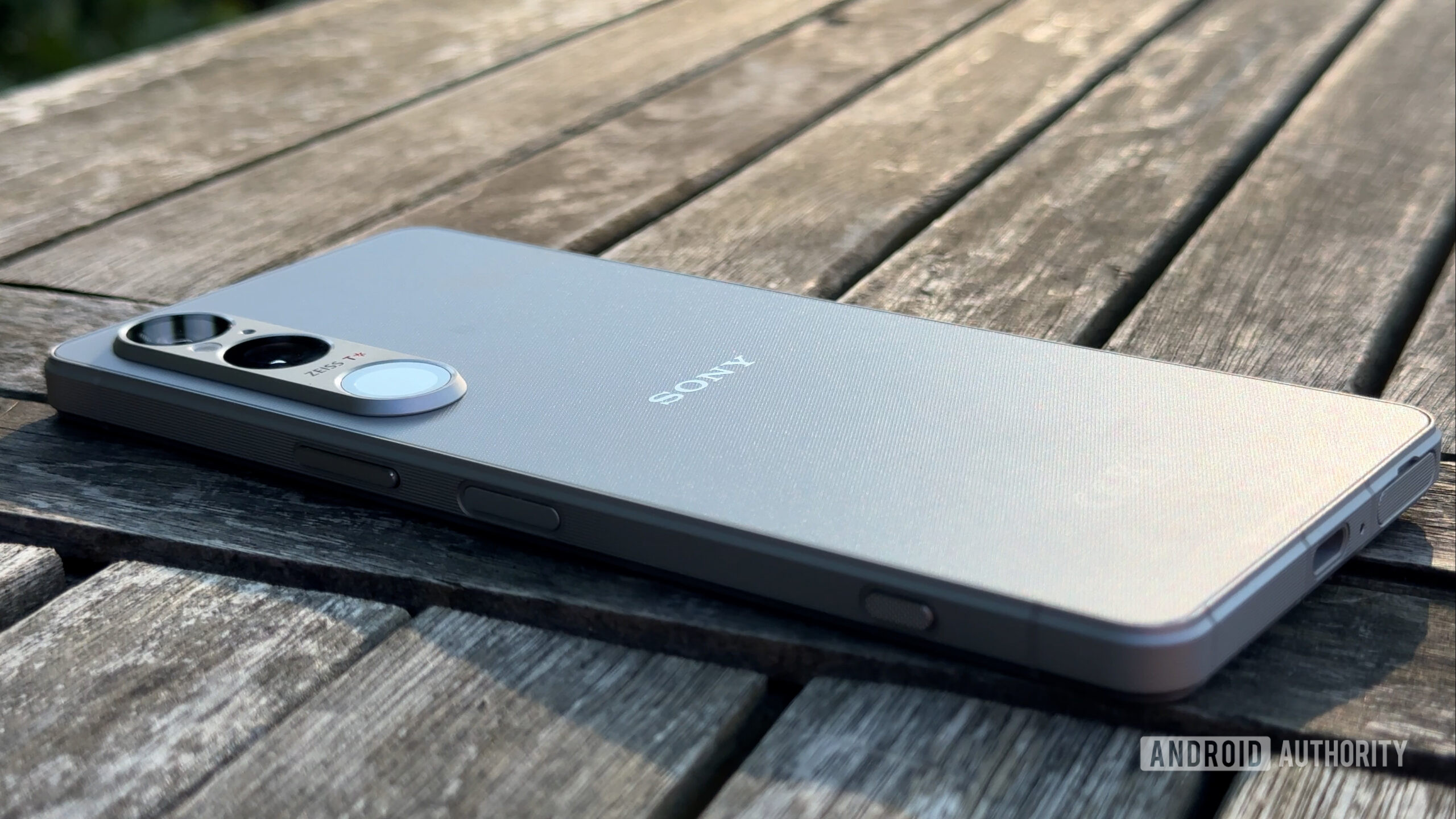

The Sony Xperia 1 VI is the best Sony flagship in years (if you can buy it)
Published onFebruary 21, 2025

Sony Xperia 1 VI
What we like
What we don't like

Sony Xperia 1 VI
Sony Xperia 1 VI review: At a glance
- What is it? Sony’s 2024 flagship Android smartphone. The Sony Xperia 1 VI adopts a familiar form but pulls back on series staples like a 4K display, while delivering more than expected in other areas — like its upgraded telephoto camera — resulting in a better device overall with greater mass appeal than many of its forebears.
- What is the price? The Sony Xperia 1 VI comes in at a characteristically premium price for the brand, costing £1,299 (~$1,640) / €1,399 for 12GB of RAM and 256GB of storage. There are also two 512GB models, however, these appear to be APAC-exclusives, priced in Sony’s homeland of Japan at ¥204,600 (~$1,270) for the 12GB RAM variant and ¥218,900 (~$1,360) for the top-tier 16GB of RAM option.
- Where can you buy it? Unlike previous entries in the series, the Xperia 1 VI doesn’t have a US release road map in place. It is, however, available in most other markets internationally, including the UK, throughout the rest of Europe, and Japan. You can buy the phone directly from the Sony Store, as well as third-party retailers, including Amazon.
- How did we test it? I tested the Sony Xperia 1 VI for just over a month before assembling this review. The sample was provided to me by Sony UK.
- Is it worth it? Rivals may do thermals, update commitments, and storage better than Sony's latest, but the changes made to this generation give the Sony Xperia 1 VI more broad appeal than any of its predecessors. Signature Sony traits — great user and gaming experiences, an uninterrupted display, and top-of-the-line silicon — persist here, but the overall experience has been elevated by the enhanced camera versatility and increased battery longevity. Its high asking price (considering the update promise) and limited availability in the US are what hold it back from being a truly great global flagship.
Should you buy the Sony Xperia 1 VI?
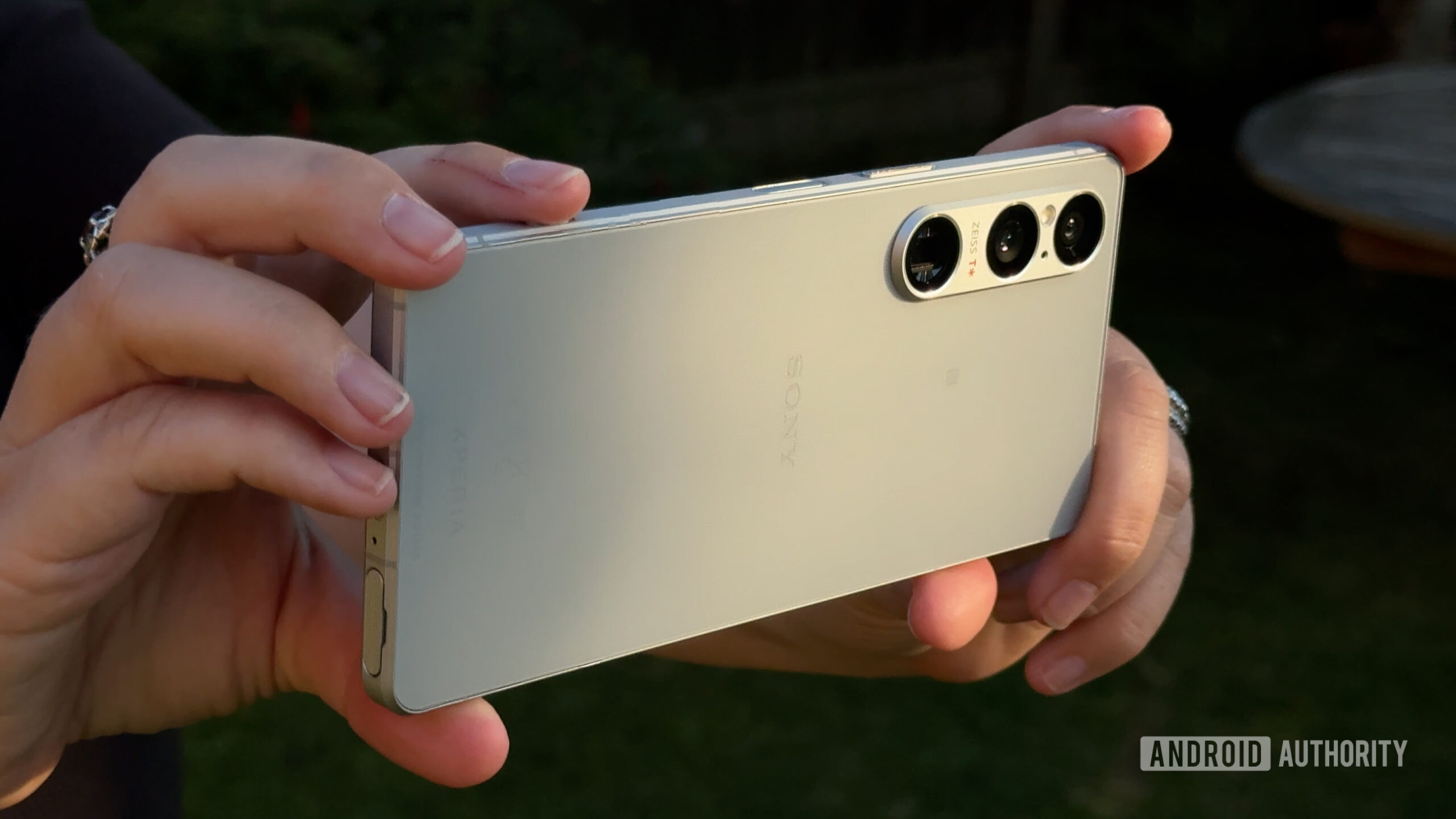
I love Sony. When smartphones from companies like Apple and Samsung zig, Sony inevitably zags, and it’s how we ended up with the Xperia 1 line in the first place.
The series has built its reputation on narrowcasting to Sony loyalists with world-first features that rivals don’t even consider competing against. However, that’s starting to change with the Xperia 1 VI.
It’s still a killer all-rounder, with the line’s now-signature utilitarian design, a clean, near-stock Android user experience, and rare design quirks, like a physical headphone jack, dual front-facing stereo speakers, and a bezel-mounted front-facing camera. But for the first time since the original 2019 Xperia 1, concessions have been made on some of the series’ defining characteristics, such as the step down from a 4K resolution, 21:9 display to a brighter, squatter 19.5:9, Full HD+ panel. This shift in Sony’s approach runs much deeper, though.
There are, in fact, a number of iterative refinements across the Mark VI that show Sony doesn’t want to exclusively panda to the die-hards anymore. It’s this greater attention on improving user experience and mass appeal, rather than breaking new ground, that makes it a better phone overall.
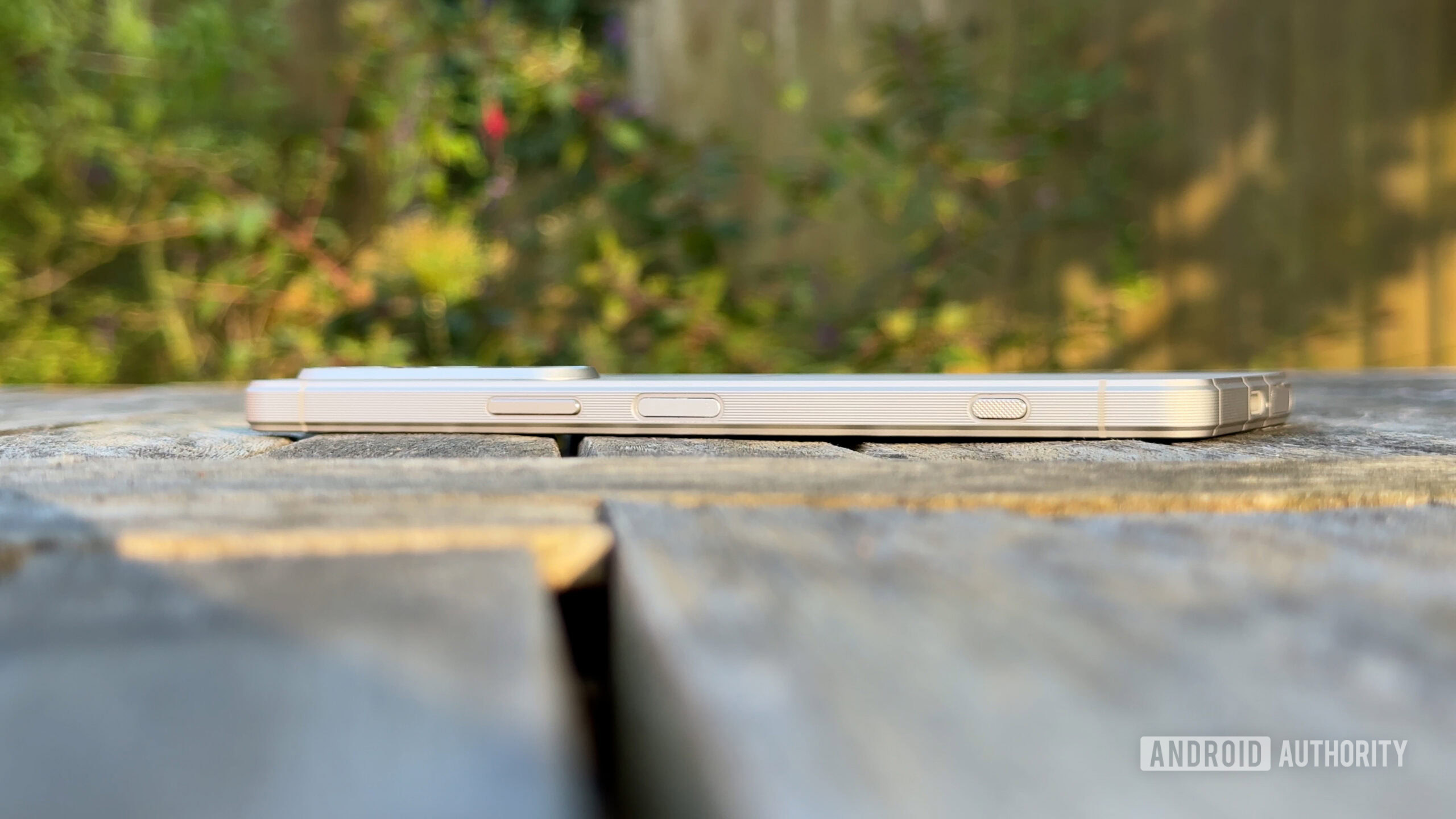
If you’ve spent any time with the Xperia 1 V, you’ll be hard-pressed to tell its successor apart from the outside. Whether that’s good or bad really hinges on your fondness for Sony’s function-led design language. A ridged aluminum rail sits between a sandwich of flat Gorilla Glass Victus 2 on the front and textured Gorilla Glass Victus on the back, ensuring the Xperia 1 VI offers what is probably the best grip of any smartphone without a case on.
The inset power button-cum-capacitive fingerprint sensor on the phone’s right side is unorthodox by today’s standards, considering the swathes of in-display readers most phones use, but it’s conveniently positioned, rapid, and reliable. Other rarities include a dual-detent knurled shutter button, a physical headphone jack, and a toolless hybrid microSD and SIM tray that you can pry out with a nail — the latter made all the more impressive by the phone’s IP65/68-certified ingress protection against dust and water.
At 196 grams, it’s also just on the right side of being comfortable to wield for long periods, even if the departure from the series’ super slim footprint means the VI is a tad wider than its predecessor.
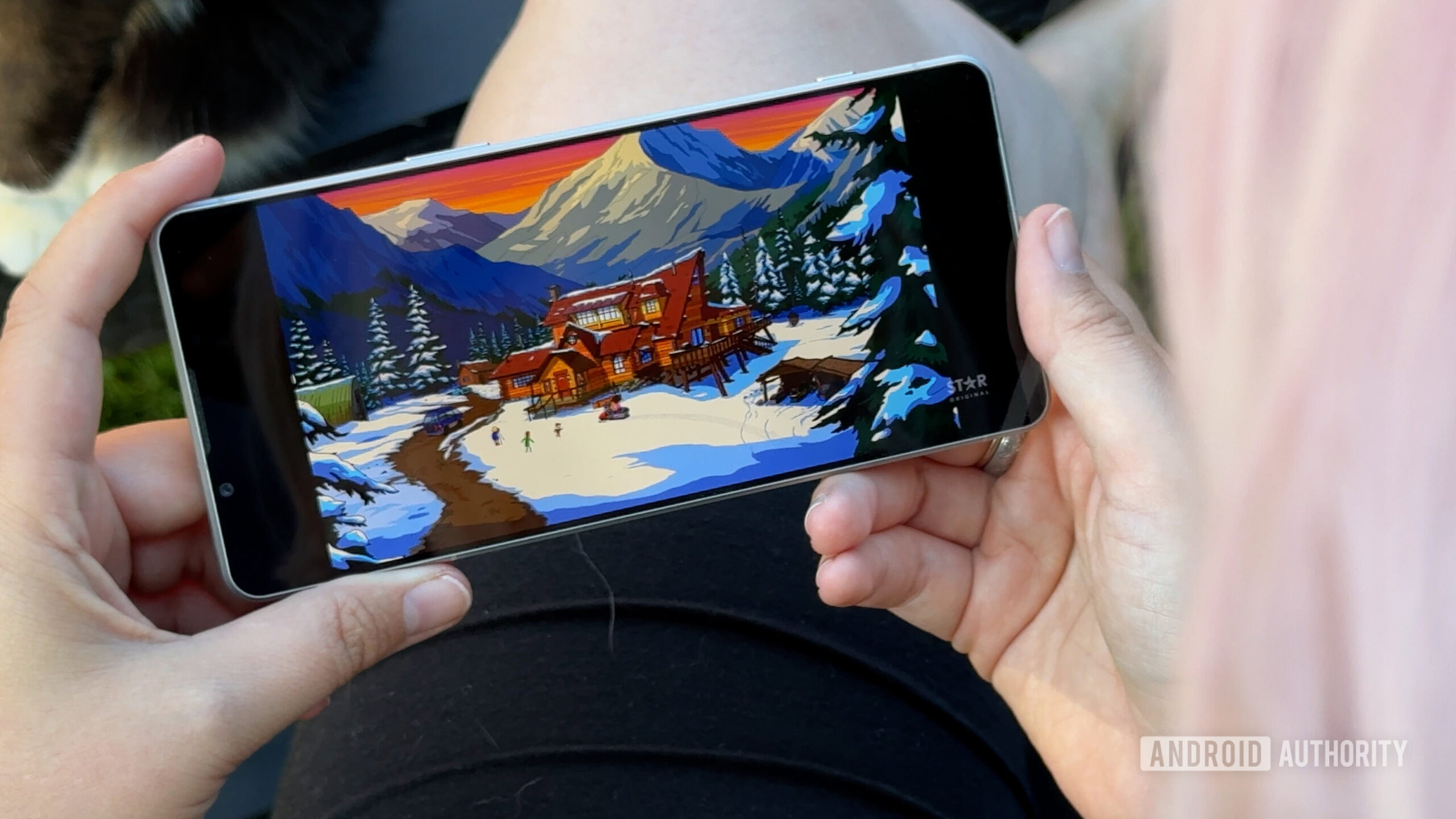
The display embodies the biggest departure that the Xperia 1 VI makes compared to its predecessors. The shift in aspect ratio is slight, but the jump in resolution is significant, at least on paper. In reality, the concessions made actually improve the phone’s viewing experience overall, so don’t fret.
For the Sony die-hards and the spec-heads, previous Xperias’ outlandish pixel density was a point of pride, a conversation starter, and a true novelty in a sea of otherwise similar-spec’d flagship phone displays, so the decision to drop down to a Full HD+ panel for the Xperia 1 VI may rub some the wrong way. However, accounting for the fact that previous entries rendered most visuals at Full HD resolution anyway, the drop down in density has allowed Sony to push in other areas.
The more functional approach Sony’s taken here offers a better user experience overall.
This is now the brightest Xperia to date, with a new panel that’s 50% brighter than the screen found on its predecessor (Sony cites a peak brightness of 1,300 nits), and in practice, the difference is both noticeable and welcome. Rivals outside of the Sony line promise even greater figures (the Samsung Galaxy S24 Ultra cites a peak brightness of 2,600 nits), but that doesn’t detract from the more practical visual upgrade users receive in favor of unmatched pixel density.
There’s also the matter of the bezel, which is thicker along the top and bottom but allows enough room for the front-facing camera (as on previous models), meaning the display itself remains uninterrupted; dual front-facing speaker grilles cut into them too. While equally thin bezels are undeniably aesthetically desirable, I much prefer the more functional approach Sony’s taken here.
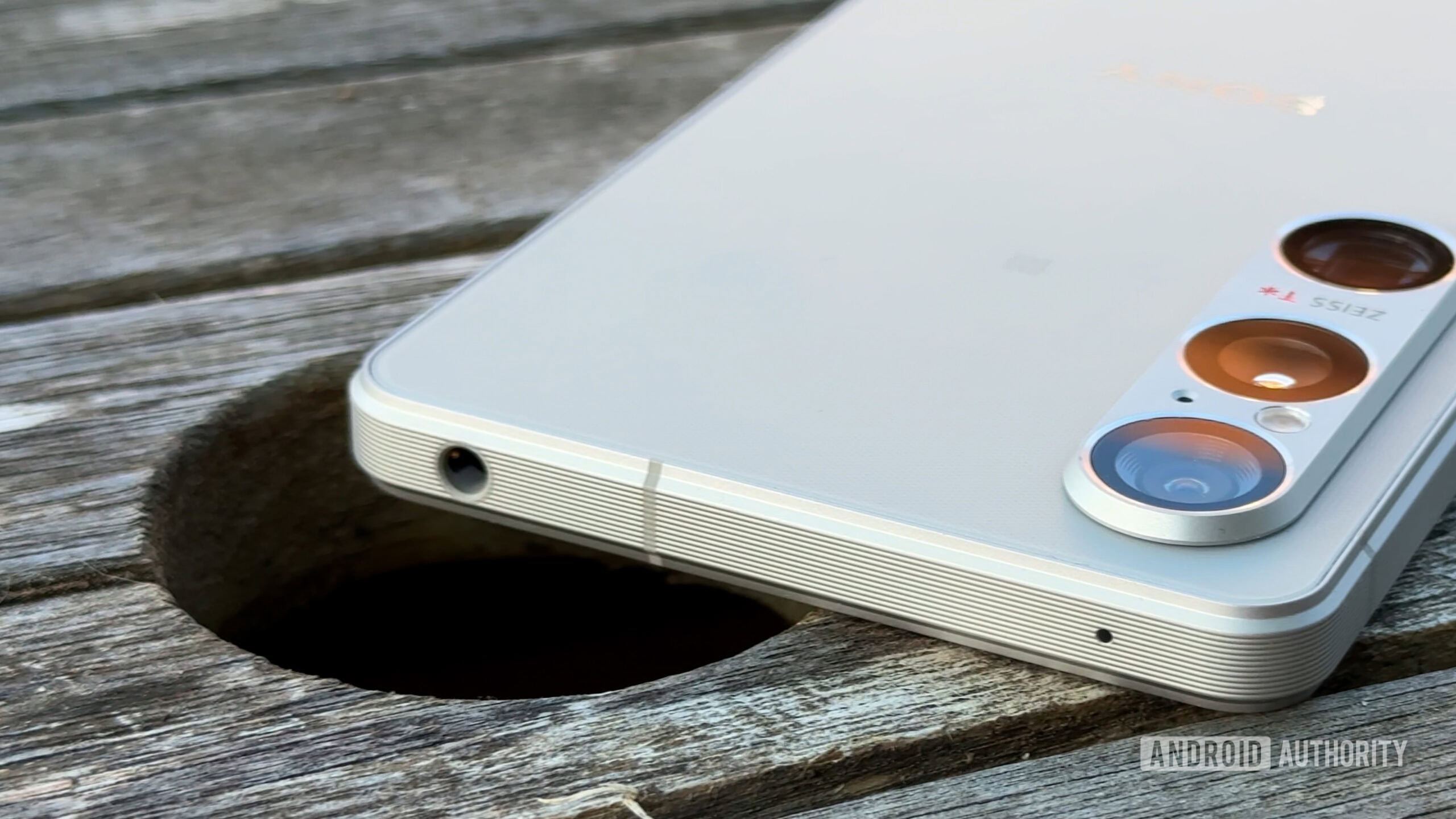
Speaking of audio, Sony’s phones have long been a bastion for mobile audio fans, and the Xperia 1 VI is no exception. The obvious benefits of opting for this latest Xperia over the usual suspects (Apple, Samsung, Google) are those “full stage” Dolby Atmos-certified stereo speakers, and the presence of a physical headphone jack.
Sure enough, they dole out impressively well-rounded sound right through the phone’s volume range, with minimal distortion and defined stereo separation, even at its peak. This clarity and depth mean its speakers sound better than those on practically any other phone I’ve tested in recent memory, and that’s without factoring in the convenience of that headphone jack for 3.5mm purists.
Then there’s everything you don’t see: support for high-res wireless audio via LDAC and Qualcomm’s aptX Adaptive standards, as well as audio upscaling with Sony’s DSEE Ultimate tech. Support for the company’s own 360 Reality Audio format persists, too, along with the Upmix feature for stereo source audio. However, finding content that supports the tech remains a challenge (Amazon Prime Music, nugs.net, Peertracks, and Sony 360 Reality Audio Live look to be your only options, right now), and you’ll also likely want compatible Sony or Audio-Technica headphones (some of which you’ll find in our pick of the best wireless headphones for Android) to enjoy it with; making the barrier to entry for the standard pretty high.
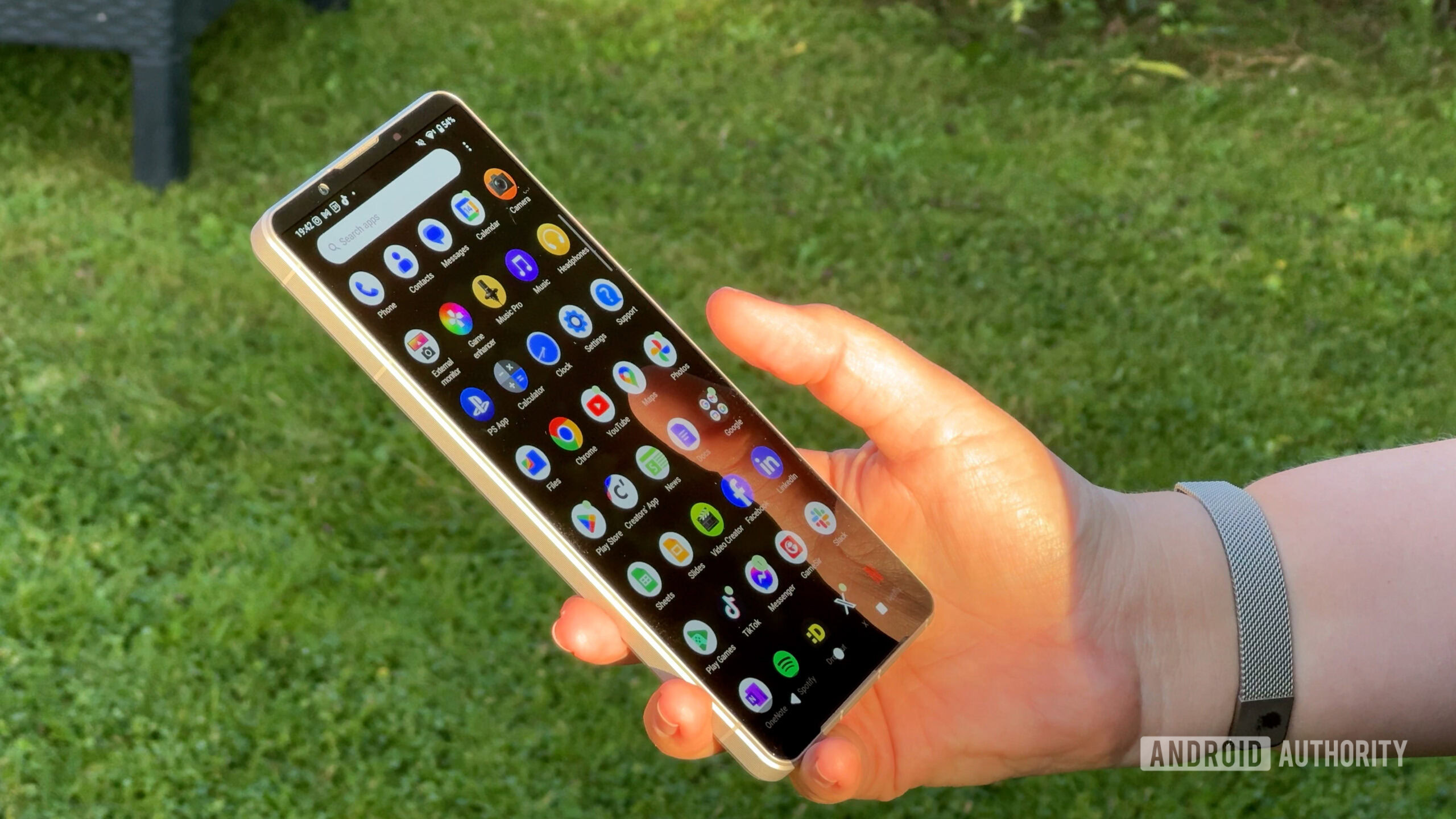
Sony’s take on Android has always been conservative and considered, and the light hand when it comes to modification is something I appreciate. Similarly to Pixels and Motorolas, the Android 14-based (now Android 15) user experience on the 1 VI is clean and near-stock, with only minor tweaks that are all to the benefit of users. A more detailed Quick Settings drawer, easier access to multitasking via the app switcher and — although activation is a little different this generation — Side Sense, which lets you quickly access customizable features and app shortcuts or app pairs.
It’s presumably Sony’s minute market share that stops it from investing in the longevity of its products.
One ongoing struggle for Sony phones is lackluster software support. Previous entries in the series have been served up with an abysmal two years of OS updates and three years of security updates post-launch, which was already behind the status quo for update policies.
With the Xperia 1 VI, Sony has at least conceded an additional year of each, so three subsequent OS upgrades and four years of security, but that continues to lag behind the rest of the industry. Samsung and Google now lead the charge, with seven of both OS and security for their flagship-tier phones. It’s presumably Sony’s minute market share that stops it from investing in the longevity of its products to the same degree, but when you’re paying upwards of £1,200 for a phone, long-term support and the potential effect that has on a device’s resale value are key factors to consider.
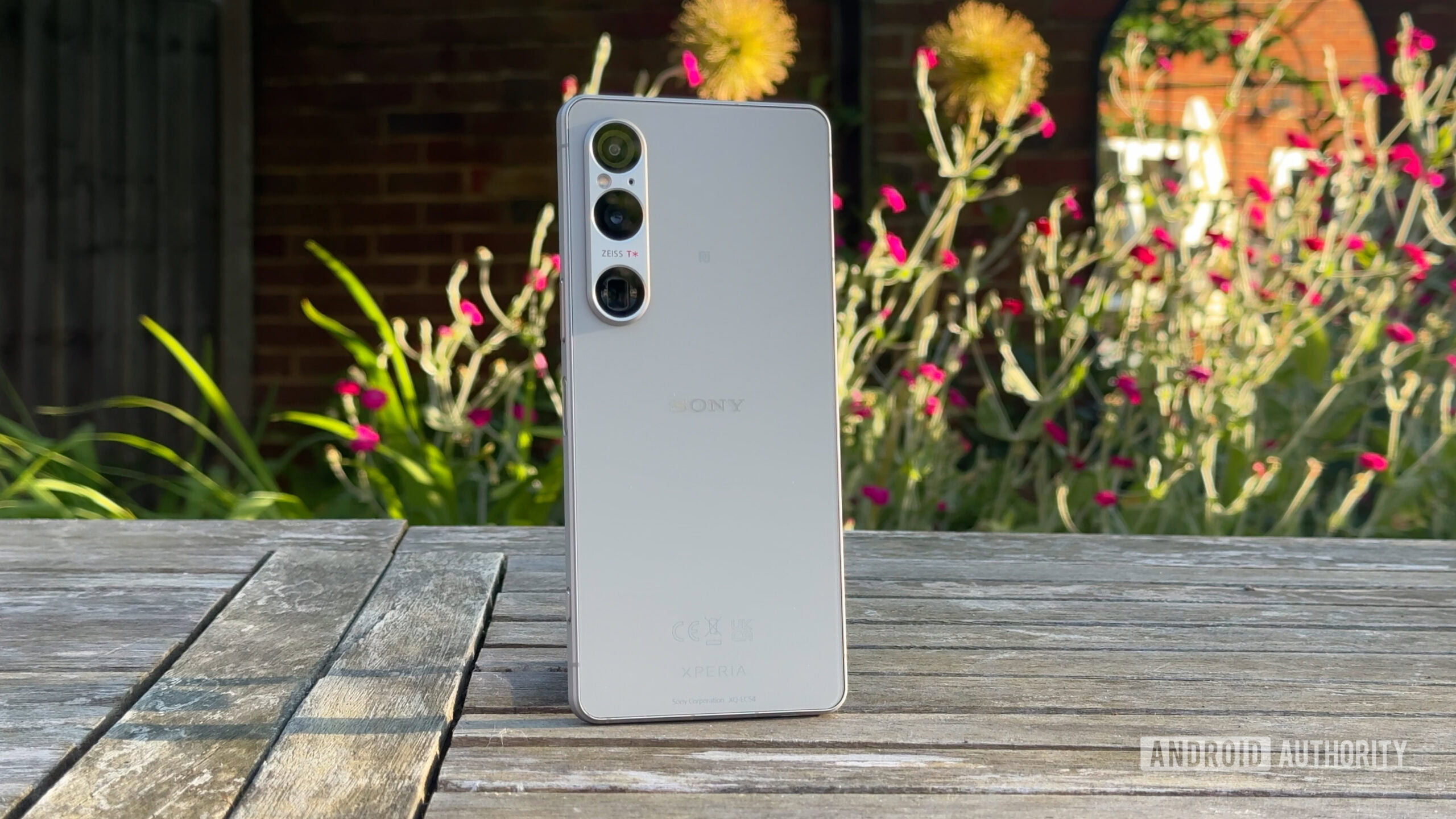
As ever, under the hood, Sony hasn’t skimped, instilling the Xperia 1 VI with Qualcomm’s late 2023 flagship mobile chip, the same Snapdragon 8 Gen 3 you’ll find in current top-tier phones from the likes of Samsung, OnePlus, Xiaomi, ASUS, and a handful of other big names.
Benchmarks place it amongst the current crowd of high flyers. However, despite the welcome addition of a vapor chamber for improved thermals (a first for an Xperia), the phone series’ challenges with sustained performance and heat build-up persist. I never ran into any on-screen warnings about heat, even during extended gaming sessions (previous Xperias loved doing this), but due to the phone’s design or perhaps optimization, I was more aware of when the 1 VI got warm more readily than other similarly-spec’d flagships I’ve tested. Declining GPU benchmark scores after successive runs suggest throttling is to blame.
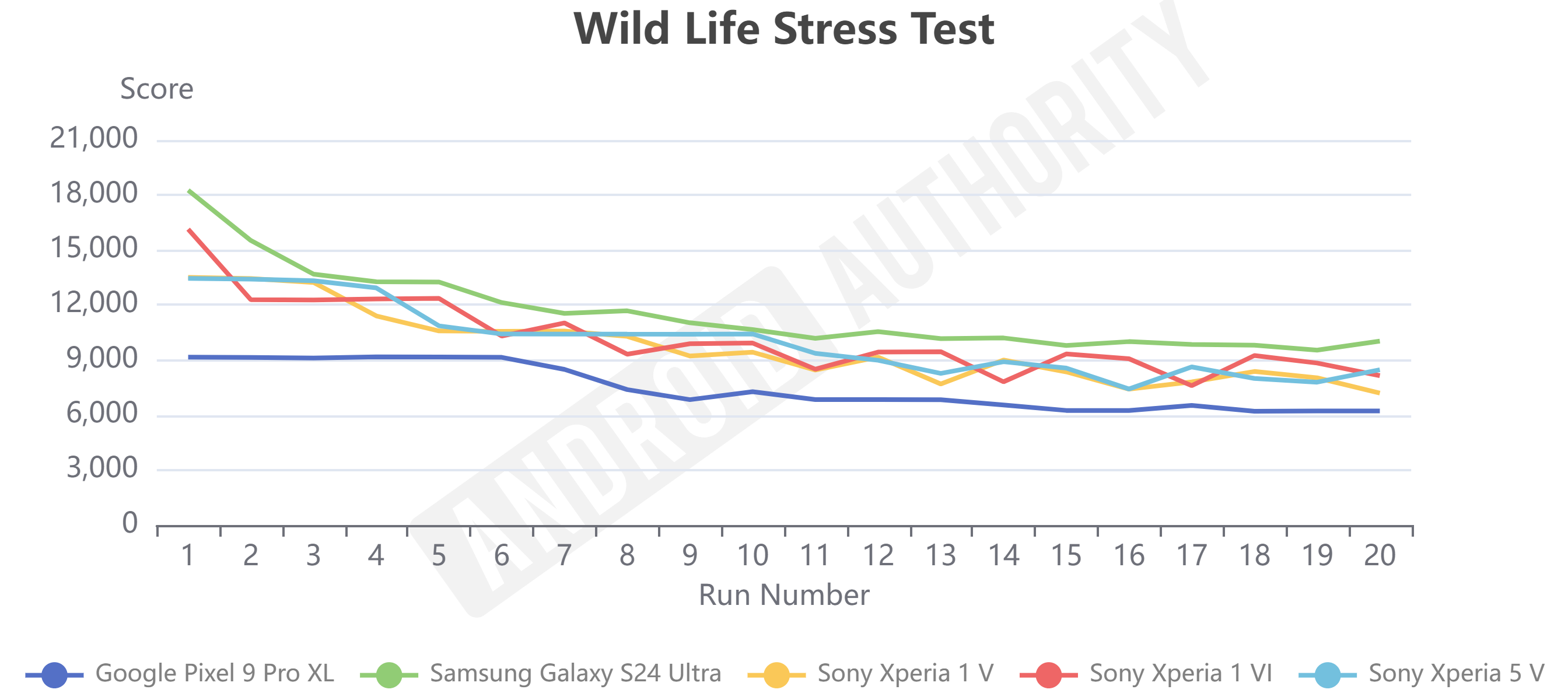
Even so, the power on hand means the Xperia 1 VI is well future-proofed, not to mention a great gaming phone, with the company’s excellent Game Enhancer software on hand to keep notifications at bay while also optimizing performance.
I just wish the Xperia 1 VI was available with more storage outside of Japan (where it tops out at 512GB). Sure, it’s one of the few phones that remains microSD-expandable (up to 1.5TB), but as far as fast internal storage goes, in the majority of markets, you’re limited to 256GB, which feels pretty restrictive for a phone that prides itself on being able to capture professional-looking high-resolution video.
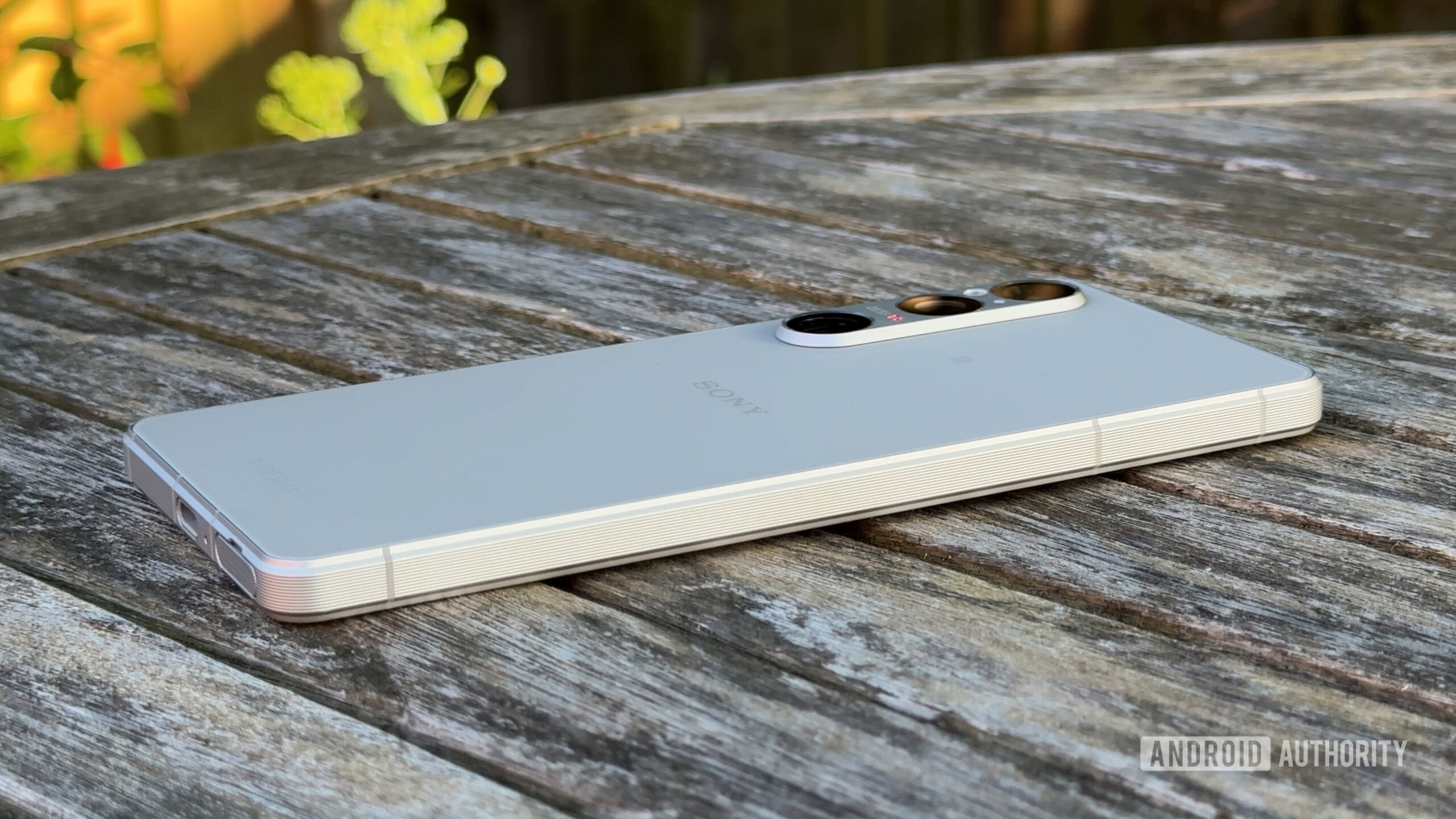
The Qualcomm silicon, a clean, snappy user experience, and that not-insignificant generational drop in display resolution all combine to grant the Xperia 1 VI one of its biggest strengths: battery life.
The phone’s battery hardware doesn’t really deviate from prior entries in the series, with a 5,000mAh cell, 30W wired charging, 15W wireless charging, and support for reverse wireless charging, but this latest Xperia’s specific cocktail of components and software optimization means it boasts far greater longevity than any of its predecessors. Nearly ten and a half hours of screen-on time means it approaches iPhone 15 Plus/Pro-levels of use on a single charge, which helps it rank among some of the longest-lasting flagships in the business right now.
Recharging the phone isn’t quite as impressive: using a compatible 30W Power Delivery PPS charger repeatedly got my test device to 47% charge in 30 minutes (just shy of Sony’s 50% claim), while a full recharge took almost exactly 1.5 hours, every time.
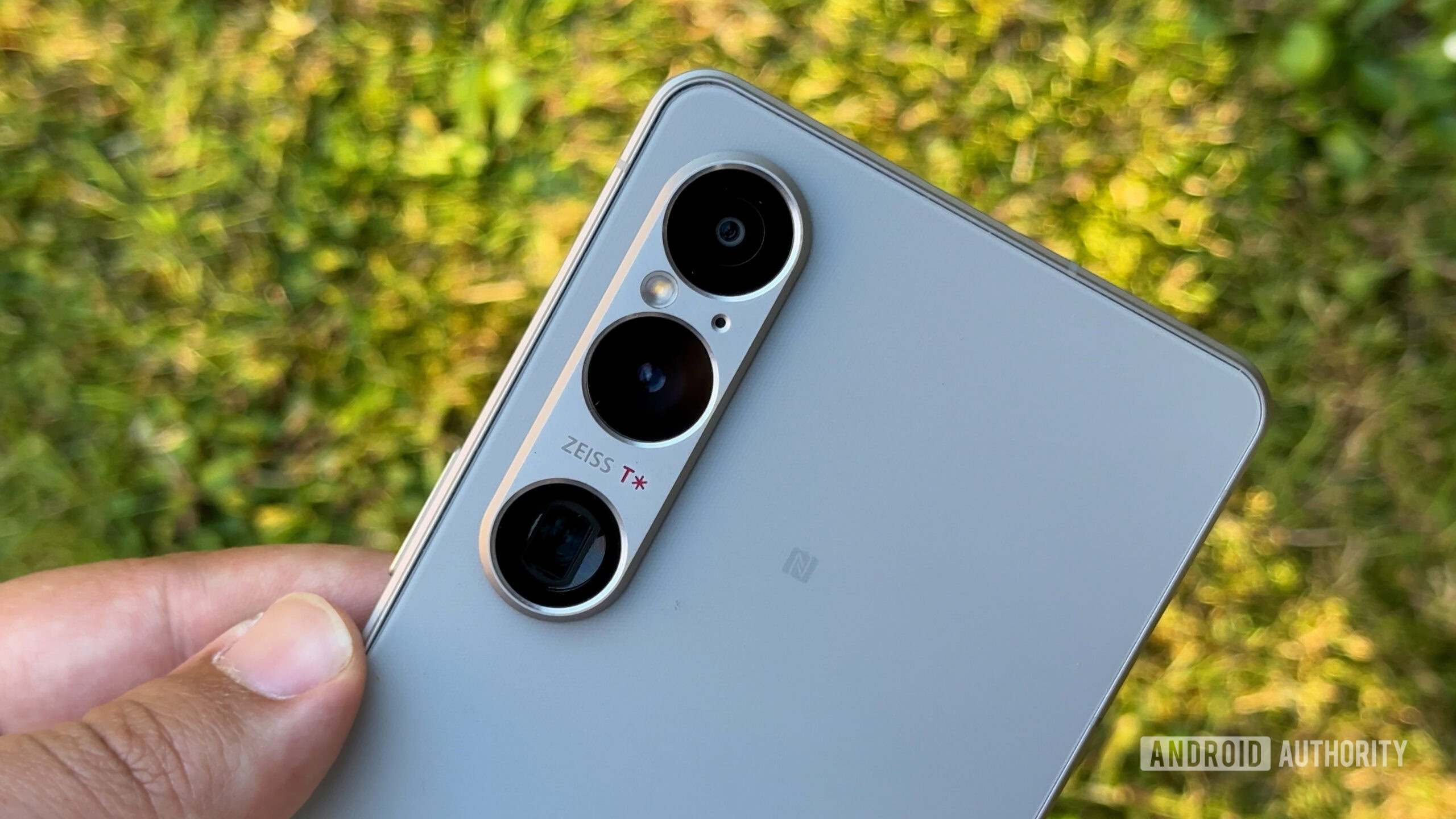
The optics on Sony’s Xperias are always interesting, but for a company that creates the sensors used by the bulk of the world’s best camera phones, its own devices seldom challenge its competitors. That might change with the Mark VI’s camera setup, not because it switches things up, but simply because it benefits from a gamut of carefully curated quality-of-life improvements over the Xperia 1 V.
You get near-identical underlying hardware to its predecessor — including the unusual 52MP stacked Exmor T sensor, which crops to 48MP and pixel-bins down to 12MP, by default. Then there are the two 12MP Exmor RS sensors; one for the ultrawide and one for the telephoto. It’s here that the series’ standout continuous optical zoom now reaches further than ever before, up to 7.1x, compared to 5.3x on the last two models, and Sony’s managed to get more than you might expect out of it.
Beyond straight image quality, competent versatility is one of the main reasons why any given camera phone may be an easy recommendation, and as subtle as that improved zoom range might seem, it scores the Xperia 1 VI major points in the versatility department.
The obvious advantage is that you can now shoot across more focal lengths than any previous Xperia, from 16mm on the ultrawide right up to 170mm, with lossless optical zoom available from 85mm or 3.5x up. There’s also the primary camera’s 2x lossless sensor-crop zoom — first encountered on the Xperia 5 V — which all-in gives the 1 Mark VI five discrete lossless focal lengths, or seven if you include the lossy 10x and max 21.3x options found within the phone’s camera app.
Speaking of which, Sony has done away with the convoluted trio of Photo Pro, Video Pro, and Cinema Pro here, instead paring the photographic experience back down to a single app. It doesn’t have a UI inspired by the company’s professional Venice cameras, but it otherwise gives you all the functionality you’d expect for a phone of this caliber. Not to mention long-requested features, like focus-peaking and support for unbinned 48MP stills, are finally part of the equation too.
The Xperia 1 VI major points in the versatility department.
Being able to capture up to a greater distance without loss in optical quality is an obvious win here, but the tele experience on the Mark VI actually goes much deeper. For one, this makes for a great portrait photography phone, with the series’ signature natural-looking imagery and true-to-life color science, supported here by AI-led depth mapping and image segmentation in place of the Time-of-Flight sensor found on older models. The results speak for themselves.
Flip on Bokeh mode, and you’ll get shots with great edge detection and nice, natural-looking depth of field fall-off, with the ability to punch up or pull back on the depth effect in real-time using the on-screen slider.
Video capture is arguably one of my favorite aspects of the phone’s camera experience, not least because of the improved dynamic range and the ability to shoot at up to 4K 120fps, along with killer slo-mo capture. What’s more, the phone’s portrait prowess persists here, too, with a dedicated Bokeh Video mode that works across all the phone’s main focal lengths. It is only hamstrung by a Full HD resolution ceiling and — unlike standard video capture — the inability to manipulate zoom once you hit record.
While portrait shooting (shown above) has more practical benefits, Sony has also given the Mark VI’s telephoto a party piece of sorts: a new telemacro mode. I’m not talking about the automated Closeup mode that kicks in as soon as you near a subject (much like current iPhones and Pixels), but dedicated macro shooting; offering 120x lossless magnification, for some truly unique photos and video. As with all telephoto sensors, shooting limitations include a narrower aperture and the greater need for stabilization at the height of the phone’s focal range, but it otherwise delivers astounding, if novel, shots; provided you’ve got enough light.
Across the board, the 1 Mark VI employs a little extra sharpening compared to the Mark V, but I’d say the results are better for it. Not to mention, it’s downright faster to shoot with and makes for a better all-rounder than we’ve ever seen from the company. Check out full-sized versions of the camera samples embedded within this review (and several more) at this Google Drive link.


What are the best Sony Xperia 1 VI alternatives?
- Samsung Galaxy S25 Ultra ($1299.99 at Amazon): Samsung’s annual Android challenger offers a more ergonomic shape than its predecessor, packs more power thanks to the Snapdragon 8 Elite, and retains its S Pen (albeit with a less impressive feature kit). The Ultra is the natural challenger to the Sony Xperia 1 VI in specs and price, but it does offer much longer software support than its Japanese rival.
- Google Pixel 9 Pro XL ($1099 at Amazon): The Google Pixel 9 Pro XL is the natural successor to the Pixel 8 Pro, despite the minor title alteration. The phone bests the Sony in several areas, including support for AI smarts and lengthier software support.
- Xiaomi 14 Ultra ($989 at Giztop): Although Xiaomi has always touted its camera prowess, its latest and greatest — the Xiaomi 14 Ultra — is the first to offer something that truly could render it the market’s best. It’s a still photography master but the company has also expanded control over video capture, paired with a great visual quality that gives the Xperia 1 VI’s filmic footage a serious run for its money. Like Sony, you can also augment the 14 Ultra with camera-specific accessories, although they’re more geared towards stills, compared to Sony’s compatible vlogging additions.
- OnePlus 13 ($899.99 at OnePlus): OnePlus’ best phone in years is well worth considering. For one, it’s far cheaper than the Sony, packs a larger battery, faster charging, and a much pacier chipset. It’s 50MP triple camera array isn’t bad, either.
Sony Xperia 1 VI review: FAQ
The Sony Xperia 1 VI has a single physical SIM tray but also supports an eSIM, which together grants the phone dual-SIM functionality.
The Sony Xperia 1 VI supports wireless charging at up to 15W and reverse wireless charging too.
The Sony Xperia 1 VI supports numerous 5G non-standalone and standalone bands ([NSA] n1, n3, n5, n7, n8, n20, n28, n38, n40, n41, n75, n77, n78 [SA] n1, n3, n7, n8, n20, n28, n38, n40, n75, n77, n78).
Sony has long granted its phones (and tablets) IP65/68-certified dust and water ingress protection, and the Sony Xperia 1 VI is no different.
To access the full functionality of Remote Play on an Android device, it needs to be running Android 12 or newer. The Sony Xperia 1 VI launches with Android 14 and has since received its Android 15 update, so is fully compatible.